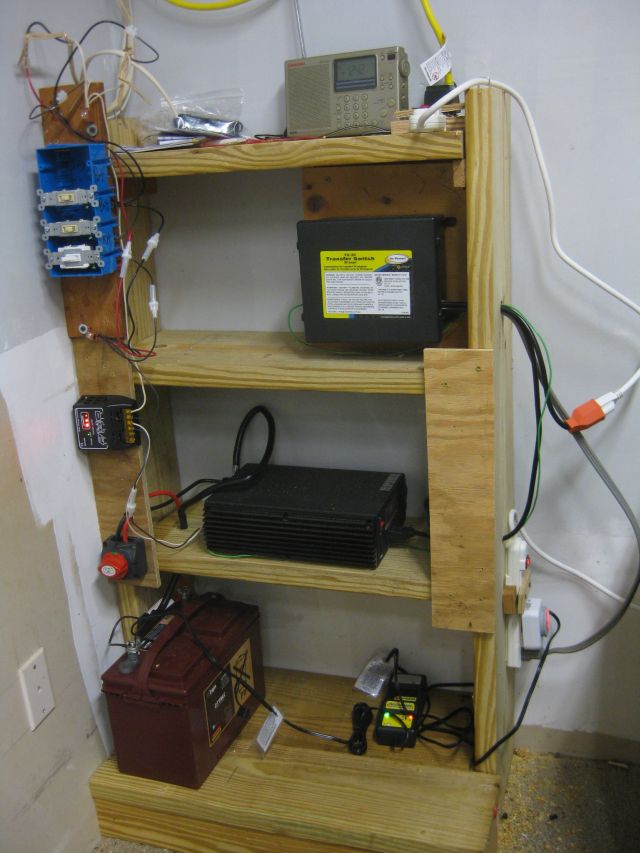My ups has several components:

On the bottom shelf is a 12 volt deep cycle battery and smart battery charger. Just above the battery is a marine dc shut off switch. dc (direct current) which a battery provides, is constant and does not cycle positive and negative as does ac (alternating current) household electricity, therefore it is more difficult to interrupt and requires a heavy duty on/off switch such as you would find on a small boat, which also uses dc.
On the shelf above the battery is an inverter – its function is to convert 12 volt dc to 120 volt ac. It also has a shut off mechanism to prevent excess draining of the battery, and it has a resettable fuse in the event of a short. Appropriately sized fuses are very important otherwise a short can cause a fire.
My ups provides ac household current and also 12 volt dc which powers 3 led lamps. To prevent the dc load from excessively draining the battery I have installed a device used for solar systems which regulates the power supplied by the pv (photo voltaic) panels to the battery and the power taken from the battery. I do not have pv’s but will include them at a future date. In the meantime the function of the solar charger is to prevent excess draining of the battery by the dc lamps.
Above the solar charger are 3 regular on/off switches. The current to the led lamps is not large – they are 12 volt 10 watt lamps so the current to each lamp (using the formula volts*amps = watts, therefore amps = watts/volts or 10/12) is about .85 amps, and regular 15 amp ac switches should suffice. I have also included several fuses – 1 for the solar charger and 1 for each of the dc lamp circuits. I have a range of fuses of different amps and tested from the small to larger until I found lowest amp fuse which did not short. The idea is that if there is unusually high current running through a circuit the fuse should trigger as quickly as possible.
On the shelf above the inverter is my automatic transfer switch. The way it works is the household electricity powers the battery and the ac devices connected to the ups system. If the power is out then the transfer switch disconnects from the household supply and allows the battery to power the ac devices. When the household power is restored, the transfer switch disconnects from the battery supply and reverts to the household supply. It is critical the transfer switch be correctly wired.
On the top shelf you can see a yellow cable which takes the ac power from the ups system to ac devices located elsewhere in the house. The ac devices include: a) a security system which also has a backup battery; b) the dsl internet modem; c) the internet wireless router; d) the device which connects the security system to the internet; d) a dvr (digital video recorder) and a bank of security cameras.
